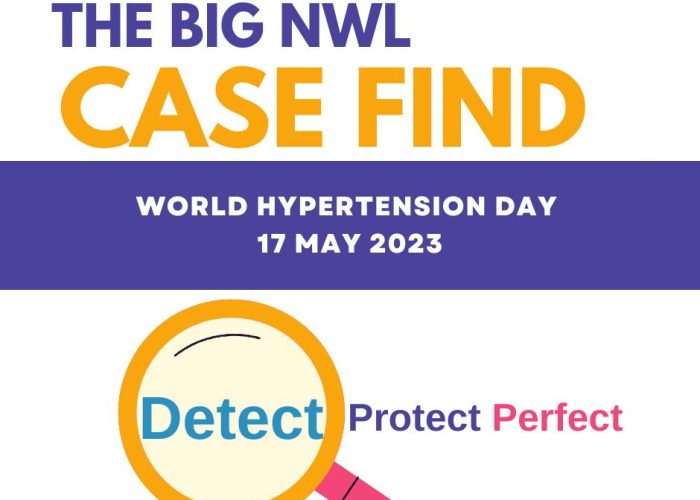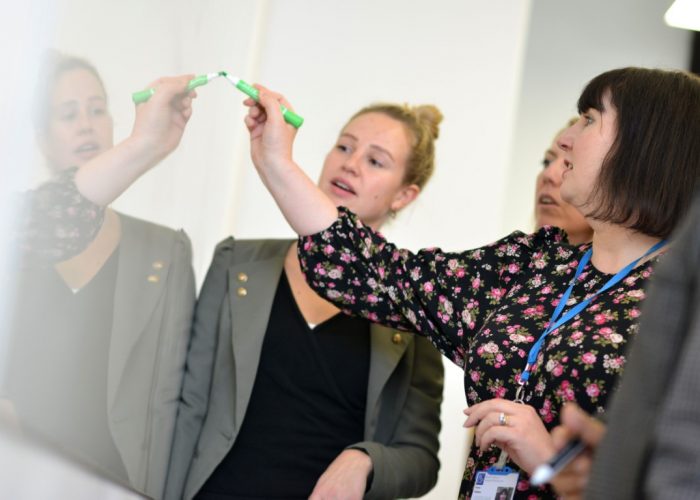Sara Sekelj, Data Analyst, explains how ICHP and their partners used integrated data to discover opportunities for improving health outcomes for frail patients.
ICHP’s access to data is significant – a crucial advantage in a realm where the best possible data is essential for effective decision-making.
But this data is only useful if you know what you are looking for, and how to draw conclusions from it. I recently presented at the Bio Japan conference, about how studying trends in large datasets could help inform and improve the care of elderly and vulnerable patients, particularly those with some form of muscle weakness.
The primary information we used came from Hospital Episode Statistics (HES) data for patients across England. HES is a database containing details of all admission, A&E attendances and outpatient appointments at NHS hospitals. For the purposes of this study we looked purely at the data on patients aged 65 and over.
We collaborated with Dr Foster, using their Global Frailty Score. They, like us, help healthcare organisations to use data to make insightful decisions, and their frailty score breaks patients down into seven different frailty groups:
1. Dementia and delirium
2. Mobility problems
3. Falls and fractures
4. Pressure ulcers and weight loss
5. Incontinence
6. Dependence and care
7. Anxiety and depression
We used these groupings when looking at the HES data, but also added two additional groups. These were:
• Weakening (loss of appetite, anorexia)
• Muscle weakness (muscle atrophy)
We looked at data from five full calendar years, from 2013 to 2017 and, for each patient, we also looked at their previous 12-month history. For example, they would be flagged as having muscle weakness if it was coded in the current admission or in any previous admissions for a period of 12 months.
Initially the analysis was done on ALL patients over 65 years of age and then repeated in all patients over 65 years of age considered frail by the Dr Foster Global Frailty Score. 50 per cent of all admissions of the over 65s fell into at least one of the frailty groups (slide 6).
Our analysis studied four main areas – admissions, hospital mortality rates, readmissions within 30 days, and long lengths of stay (defined as over 10 days).
As well as the data analysis, a targeted literature search was undertaken to look at definitions of frailty and associated conditions, and at the evidence for association between frailty and sarcopenia. What we found was an indisputable link between muscle weakness and the amount of care a patient needed, as well as poorer outcomes for those with muscle weakness, compared to those with many other types of frailty.
For example, 42 per cent of patients with muscle weakness have long length of stay compared with 24 per cent of patients overall.
What is particularly interesting is that despite the prevalence of muscle weakness in the outcome analyses, only 0.1 per cent of all admissions data for over 65s includes any mention of muscle weakness. This points to two things:
1. That clinicians are rarely coding muscle weakness on a patient’s notes during admission, even if it is present. Instead they are focusing more on the primary reason for the admission, for example a heart attack or stroke.
2. That many people develop the condition during their stay in hospital(slide 10)
This makes it very difficult to get a clear picture from the data of just how many patients are being admitted to hospital with muscle weakness.
What the analyses do show is the huge burden that frailty in all its forms places on the health system. Put simply, patients with these conditions need more care than their peers without. They also have a greater chance of dying in hospital.
We hope that the conclusions drawn here will enable health systems to delve deeper into the issues associated with frailty – and muscle weakness in particular. Our research showed that coding practice around muscle atrophy can be poor, and improvement is needed.
By pulling together statistics that show in black and white the links between frailty and poor health outcomes, we can enable clinicians, providers and funders to begin discussing the issue, to look further at what can be done, and, ultimately, improve the care that this group of patients receive.
Read more detailed information on the project outcomes.




